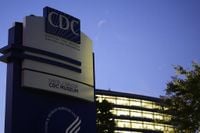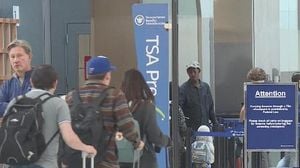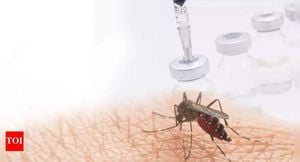The U.S. Centers for Disease Control and Prevention (CDC), long considered the backbone of American public health, is now in a state of unprecedented turmoil. After the dramatic ouster of its director, Susan Monarez, on August 27, 2025, and a cascade of high-profile resignations, the agency faces a crisis of leadership, trust, and capacity that threatens to upend the nation’s approach to disease prevention and health policy.
The chain of events began when Health Secretary Robert F. Kennedy Jr.—a vocal anti-vaccine advocate—removed Monarez just weeks after her Senate confirmation. According to the Department of Health and Human Services, Monarez was dismissed for refusing to align with Kennedy’s anti-vaccine and anti-science agenda. Ironically, Kennedy had praised Monarez’s “unimpeachable scientific credentials” upon her appointment. But, as AP reports, it was precisely her commitment to scientific rigor that led to her abrupt downfall.
This leadership shakeup was the final straw for an agency already battered by years of criticism, workforce reductions, and budget cuts, many of which were initiated during the Trump administration. The CDC endured further blows earlier in August, when a gunman—reportedly radicalized by vaccine misinformation—attacked the CDC campus, killing a local police officer and traumatizing staff. The sense of crisis within the agency has only deepened since then.
Monarez’s removal triggered immediate and widespread outrage among lawmakers, public health experts, and CDC staff. Four top leaders—including Dr. Debra Houry, Dr. Daniel Jernigan, Dr. Demetre Daskalakis, and Dr. Jennifer Layden—resigned in protest, leaving gaping holes in the agency’s leadership structure. Dr. Georges Benjamin, director of the American Public Health Association, told AP, “The whole chain of command has just been disrupted. It’s like getting rid of your generals in the middle of a war.”
With the CDC in chaos, the effects have rippled far beyond Atlanta. Dr. Anne Schuchat, former principal deputy director of the CDC, warned, “The average American should worry about their safety and their health and whether information coming out of Health and Human Services is reliable or trustworthy.” She pointed to the CDC’s crucial role in tracking everything from infectious disease outbreaks to the safety of drinking water and the presence of lead in pipes. “If people are doing well and healthy, it’s probably partly because of the CDC,” she added.
The immediate impact is already being felt. In May, Kennedy unilaterally announced that COVID-19 vaccines would no longer be recommended for healthy children and pregnant women—without consulting the CDC’s Advisory Committee on Immunization Practices (ACIP), the expert panel traditionally responsible for such guidance. A month later, he dismissed the entire ACIP panel, accusing its members of being too closely aligned with vaccine manufacturers, and replaced them with a handpicked group that included several vaccine skeptics. Longstanding doctors’ organizations were excluded from this new process.
The result has been confusion and alarm among medical professionals. The American College of Obstetricians and Gynecologists continues to recommend COVID-19 shots for pregnant women, while the American Academy of Pediatrics maintains its advice for children ages six months to two years—both counter to the new CDC stance. As AP notes, it remains unclear which recommendations insurers will follow or how states with vaccination policies tied to ACIP will proceed. Massachusetts, for example, has moved to give its health department authority to set its own vaccine schedule if the federal government “fails to maintain a robust schedule of vaccine recommendations.”
In the absence of clear federal leadership, outside groups are scrambling to fill the vacuum. The Vaccine Integrity Project, launched at the University of Minnesota, convened an ACIP-like meeting in August, bringing together subject-matter experts—including the editor-in-chief of the New England Journal of Medicine—to review the latest research on vaccine safety and effectiveness. However, as organizers admitted, they lack access to the unpublished data and resources that only the CDC can provide. “There may be some workarounds,” said Dr. Megan Ranney, dean of the Yale School of Public Health, “but I’m not sure it’s fair or appropriate that people feel like they have to turn to private groups instead of the government.”
Other patchwork efforts are also emerging. After the CDC’s vaccine information website, www.vaccines.gov, went offline in July when its government contract ended, researchers at Boston Children’s Hospital revived an earlier version, www.vaccinefinder.org. “We’re turning back to what it was,” said John Brownstein, who founded the site. “Obviously, as a (government) site it carries more weight. But if that isn’t in the cards, we’re very happy to carry the torch.”
The collapse of other CDC programs has spurred similar grassroots responses. When the CDC’s Division of Oral Health was eliminated in the spring, the Association for Dental Safety stepped in, launching a new institute to update infection control guidelines for dental offices—guidelines last revised by the CDC in 2003. Nicole Johnson, former associate director in the CDC’s Division of Oral Health, stated, “Without a doubt, ADS is the best choice to continue oversight of dental infection prevention and control guidelines, ensuring recommendations are current, scientifically sound, translated into lay terms and disseminated to those who need them on a daily basis.”
Meanwhile, the CDC’s Pregnancy Risk Assessment Monitoring System, the nation’s most comprehensive source of maternal health data, lost its entire staff to layoffs this year. California is running its own version of the survey, but as Jamie Daw of Columbia University explained, “If states are doing their own thing, then we don’t have national, comparable data across jurisdictions and across time,” making it impossible to identify the most severe problems or evaluate which policies are working to reduce maternal deaths.
Violence prevention efforts have also suffered. About 100 CDC staffers who provided training and support for community violence prevention programs were recently fired. Former CDC researcher Sarah DeGue, one of those laid off, has since founded a consulting firm to help organizations develop and evaluate their programs. “It’s us trying to rebuild what we had somewhere else, in a different way, so that all the knowledge and experience and resources that we had can still be available,” she explained.
As the CDC’s capacity shrinks, experts worry about the consequences for public health. Dr. Richard Besser, former acting CDC director, noted that the agency’s chain of command has been severely disrupted, and warned that the effects could include confusion over vaccine availability and delayed responses to outbreaks of diseases like measles, E. coli, and listeria. Michael Osterholm, a University of Minnesota infectious disease researcher, criticized recent decisions, saying, “These decisions, made without supporting evidence, reflect a troubling pattern by HHS of interfering in the relationship between patients and their healthcare providers and limiting access to vaccines—public health tools proven to save lives and reduce costs.”
Looking ahead, the process for replacing Monarez will require a presidential nomination and Senate confirmation—a process that could take months, according to Dr. Benjamin. In the meantime, Jim O’Neill, a top adviser to Kennedy, has been tapped to serve as acting CDC director, though his appointment has not been formally announced. The agency’s future, and the health of millions of Americans, now hangs in the balance as the CDC’s once-unshakable foundation appears more fragile than ever.
For now, as the CDC’s authority and capacity wane, the nation’s public health system faces a test unlike any in its history—a test whose outcome remains far from certain.






